Keywords
|
| Boost converter ; Inverter ; Solar cell model ; Solar cell connected with Grid. |
INTRODUCTION
|
| Now a days the demand of Electrical power in increasing day by day but the presence of coal and fossils fuels are towards the end. So it is the time to find find another way to generate the power. Sometimes it is also difficult to transmit power to the remote and hilly places which are far away for the main generating station. In order to improve energy efficiency and power quality issues. The use of solar cell energy is considered to be a primary resource, because there are several countries located in tropical and temperate regions, where the direct solar density may reach up to 1000W/m. At present, solar cell (PV) generation is assuming increased importance as a renewable energy sources application because of distinctive advantages such as simplicity of allocation, high dependability, absence of fuel cost, low maintenance and lack of noise and wear due to the absence of moving parts. So here we are trying to model a non-conventional energy generation system using wind and solar sources. No pollution is emitted here i.e. 100% environmental friendly. |
SOLAR CELL
|
| A solar cell system converts sunlight into electricity. The basic device of a solar cell system is the solar cell cell. Cells may be grouped to form panels or modules. Panels can be grouped to form large solar cell arrays. The term array is usually employed to describe a solar cell panel (with several cells connected in series and/or parallel) or a group of panels. Most of time one are interested in modelling solar cell panels, which are the commercial solar cell devices. This paper focuses on modeling solar cell modules or panels composed of several basic cells. The term array used henceforth means any solar cell device composed of several basic cells. In the Appendix at the end of this paper there are some explanations about how to model and simulate large solar cell arrays composed of several panels connected in series or in parallel. |
SOLAR PANEL MODEL:
|
| Since a typical PV cell produces less than 2W at 0.5V approximately, the cells must be connected in series-parallel configuration on a module to produce enough high power. A PV array is a group of several PV modules which are electrically connected in series and parallel circuits to generate the required current and voltage. The equivalent circuit for the solar module arranged in NP parallel and NS series. The terminal equation for the current and voltage of the array becomes as follows, |
 |
| In fact, the PV efficiency is sensitive to small change in SR but insensitive to variation in SHR . For a PV module or array, the series resistance becomes apparently important and the shunt down resistance approaches infinity which is assumed to be open. In most commercial PV products, PV cells are generally connected in series configuration to form a PV module in order to obtain adequate working voltage. PV modules are then arranged in series-parallel structure to achieve desired power output. An appropriate equivalent circuit for all PV cell, module, and array is generalized and expressed, |
DC-DC BOOST CONVERTER:
|
| A boost converter is a dc to dc voltage converter with an output dc voltage greater than input dc voltage. This is an SMPS containing at least two semiconductor switches (a diode which act as freewheeling diode two ensure a path of the current during the off state of other switch and a transistor connecting in series of the source voltage). Filters made of capacitor and inductor is used to reduce the ripple in voltage and current respectively, is used at the output stage of the converter . |
| The basic operating principle of the converter consists of the two distinct states. |
| ïÃÆÃË In on state, switch is closed, resulting in an increase in the inductor current. |
| ïÃÆÃË In off state, switch is open, resulting in decrease in the inductor current. |
DC-AC INVERTER
|
| Inverters that take DC and produce a constant amplitude sinusoidal output have been studied and designed for many years. Initially, most inverter technology used silicon controlled rectifier (SCR) devices and a transformer coupling to approximate a sine wave via line commutation . As power transistors became More feasible, most low to medium power inverter systems replaced the SCR with the MOSFET or the IGBT. These new transistors lead the way for forcecommutated inverters that can be classified in terms of their output waveform. A summary of the basic types of linecommutated inverters. Significant research and development in the area of pulse width modulation (PWM) has been done in attempt to reduce the passive filter size and create a better sinusoidal output, thus reducing harmonics. |
MODEL OF GRID CONNECTED SOLAR PANEL
|
| The simplest PV system consists of multiple solar cells connected to form a PV module. Commercially available modules range in power from 10 watts to 300 watts. One or more of these modules are connected to an inverter which convert’s direct-current (DC) output of other modules into alternating current (AC). Optionally, batteries may provide energy storage or backup power in case of a power interrupting or outage on the grid. The solar cell is connected in series and make a solar panel which is connected to the grid through the DC-DC Boost Chopper and DC-AC Inverter. The DC-DC Boost Chopper is used for the increasing the solar panel generating voltage and the DC-AC Inverter is connected for DC to Ac conversion which is connected with the grid. For the requirement of stable grid voltage with compare to solar panel output voltage we have to design some control strategies which are mainly based on two type of control process, one is power control and the another one is current control. The control strategy mainly based PID control strategy. |
POWER CONTROLLER
|
| The controller sense the grid voltage and grid current and give the corresponding grid active and reactive power. And also the power controller sense the inverter output voltage and current and give the corresponding active,reactive power. After that through PI controller we get the direct axis reference current (Idref) which is the one input of another controller which is current controller.Here we also sense the load voltage and load current and determine the RMS value of the load. By using PI controller we can get quadreture axis reference current which is another input of current controller. |
CURRENT CONTROLLER
|
| The current controller mainly used for getting triggering pulse as per the reference value. Here we take the inverter output current and using by MATLAB software converts the current into direct axis and quadrature axis current. This two currents and current given by power controller outputs compared and using PI controller we get the pulse. |
SIMULATION GRAPHS
|
SIMULATION RESULTS
|
 |
CONCLUSION
|
| Here we use the PV array which is available in MATLAB library (ECEN2060) 6 are connected in series. More members of panels can be connected to get higher voltage. Mainly we are using DC-DC boost converter because the controller design in AC is most complicated by DC.Inverter is mainly used for DC TO AC and as per inverter gate triggering the grid voltage will be varied. Set DC to AC Iref to balance the power .That is to keep VDC constant. The boost converter has advantages like reduce hardware and good output voltage regulation. Thus the boost converter is capable of improving the voltage level from 15V to require level. Fuzzy logic controller and more new controllers can be used to improve efficiency. The paper presented to this point clearly demonstrated the ability to implement a simple and cost effective control strategy on a medium power solar panel inverter system. However the system is far from perfect. The chosen topology is not necessarily the be stone and the power stress design albeit sufficient, was not optimized completely. |
ACKNOWLEDGMENT
|
| On the submission of the paper report of “MODELLING, SIMULATION AND CONTROL OF A GRID CONNECTED NON CONVENTIONAL SOLAR POWER GENERATION SYSTEM USING MATLAB” We would like to extend our gratitude and sincere thanks to my supervisor Prof. P.K. Saha and Prof. G.K. Panda, for their constant motivation and support during the course of our paper. We truly appreciate and value their esteemed guidance and encouragement from the beginning to the end of this paper. We are indebted to their for having helped us to shape the problem and providing insights towards the solution. |
Figures at a glance
|
 |
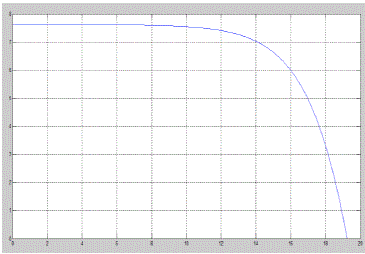 |
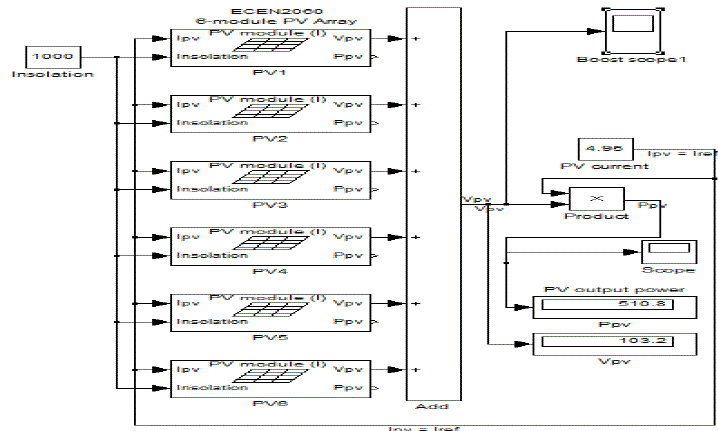 |
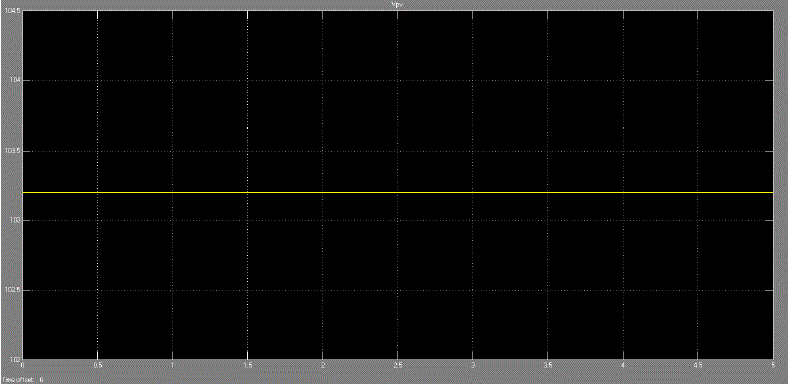 |
| Figure 1 |
Figure 2 |
Figure 3 |
Figure 4 |
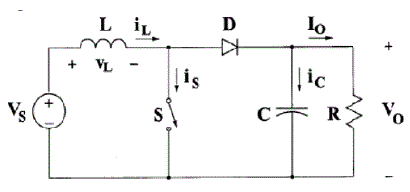 |
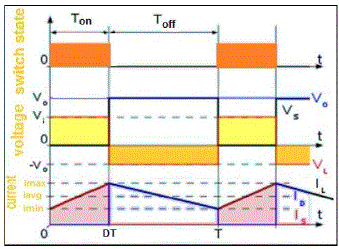 |
 |
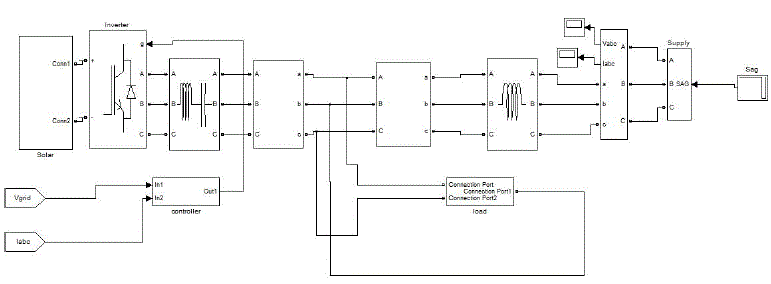 |
| Figure 5 |
Figure 6a |
Figure 7 |
Figure 8 |
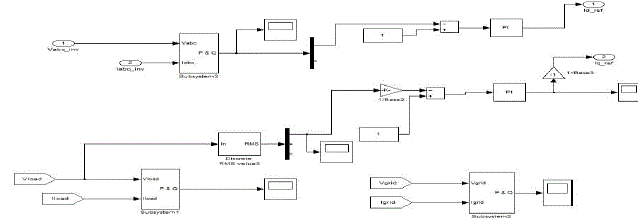 |
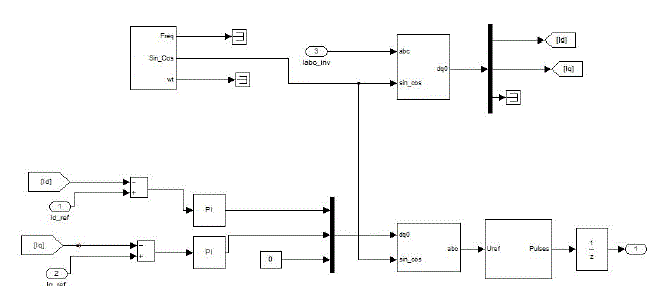 |
 |
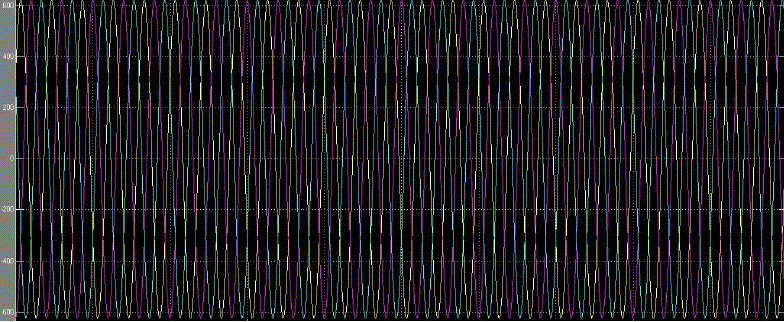 |
| Figure 9 |
Figure 10 |
Figure 11 |
Figure 12 |
|
| |
References
|
- MATLAB/Simulink Model of Solar PV Module and MPPT Algorithm,KinalKachhiya P.G. Student, 4th Semester M.E. Electrical,Sankalchand Patel College of Engineering, Visnagar, Gujarat, India. MakarandLokhande Asst. Professor,School of Solar Energy, PDPU,Raisan-382007, Gandhinagar, Gujarat, India.Mukesh Patel Asst. Professor & Head, Electrical Engg. Dept.,Sankalchand Patel College of Engineering,Visnagar, Gujarat, India.
- Simulation of Closed Loop Controlled Boost Converter for Solar Installation Athimulam Kalirasu1, SubharensuSekar Dash2
- .Modeling of Photovoltaic Panel and Examining Effects of TemperatureinMatlab/Simulink S. Rustemli, F. Dincer Department of Electrical and Electronics Engineering, Faculty of Engineering and Architecture, YuzuncuYil University,
- Control Strategies for Load-Following Unbalanced MicroGrids Islanded Operation,Supervisors:Prof. Joao Peças Lopes, INESC Porto, Portugal Dr. RachidCherkaoui,
- STUDY OF MAXIMUM POWER POINT TRACKING (MPPT) TECHNIQUES IN A SOLAR PHOTOVOLTAIC ARRAY A PROJECT SUBMITTED IN PARTIAL FULFILLMENT OF THE REQUIREMENT FOR THE DEGREE OF Bachelor of Technology in Electrical Engineering By ArjavHarjai (107EE049) AbhishekBhardwaj (107EE055) MrutyunjayaSandhibigraha (107EE056)
- Power Controller Based Grid Connected Fuel Cell Author: Siva Ganesh Malla, IIT Bhubaneswar, India.
|